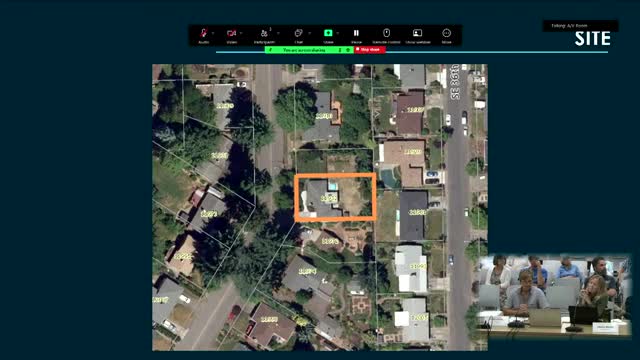Neighbors Challenge Variance for Controversial Home Addition
August 06, 2024 | Milwaukie, Clackamas County, Oregon
This article was created by AI summarizing key points discussed. AI makes mistakes, so for full details and context, please refer to the video of the full meeting. Please report any errors so we can fix them. Report an error »

In a recent government meeting, discussions centered around a proposed variance for a residential property located at 11932 Southeast 35th Avenue. The property, currently zoned for moderate density residential use, features a single detached home and a garage, with a total lot size of 7,160 square feet. The homeowner is seeking approval for a 13-foot addition to the existing garage, which would convert part of it into a bedroom and bathroom while maintaining space for one vehicle.
The existing home has a non-conforming side yard setback of just 0.5 feet, significantly less than the required 10 feet in the RMD zone. The proposed addition aims to align with the front wall of the house, preserving the garage space while adhering to other development standards. The planning commission has reviewed the application, noting that the addition would not encroach further into the side yard than the existing structure.
However, the proposal has faced opposition from neighboring property owners, Barbara Allen and Theresa Brezon, who filed an appeal against the planning commission's approval. They argue that the addition would create an unsightly wall visible from adjacent properties and that the approval criteria for the variance have not been adequately met. The appellants also raised concerns regarding the aesthetics and structural condition of the existing garage wall, although these issues were deemed irrelevant to the current variance application.
City staff clarified that the variance only needs to meet one of several discretionary relief criteria, which include minimizing impacts on surrounding properties and providing public benefits. They concluded that the proposed addition is reasonable and appropriate, as it would not significantly affect the use or enjoyment of neighboring properties.
The planning commission's decision on the variance will ultimately determine whether the homeowner can proceed with the proposed construction, which aims to enhance living space while maintaining compliance with most zoning regulations. The outcome of this appeal will be closely watched by both the applicant and the neighboring residents.
The existing home has a non-conforming side yard setback of just 0.5 feet, significantly less than the required 10 feet in the RMD zone. The proposed addition aims to align with the front wall of the house, preserving the garage space while adhering to other development standards. The planning commission has reviewed the application, noting that the addition would not encroach further into the side yard than the existing structure.
However, the proposal has faced opposition from neighboring property owners, Barbara Allen and Theresa Brezon, who filed an appeal against the planning commission's approval. They argue that the addition would create an unsightly wall visible from adjacent properties and that the approval criteria for the variance have not been adequately met. The appellants also raised concerns regarding the aesthetics and structural condition of the existing garage wall, although these issues were deemed irrelevant to the current variance application.
City staff clarified that the variance only needs to meet one of several discretionary relief criteria, which include minimizing impacts on surrounding properties and providing public benefits. They concluded that the proposed addition is reasonable and appropriate, as it would not significantly affect the use or enjoyment of neighboring properties.
The planning commission's decision on the variance will ultimately determine whether the homeowner can proceed with the proposed construction, which aims to enhance living space while maintaining compliance with most zoning regulations. The outcome of this appeal will be closely watched by both the applicant and the neighboring residents.
View full meeting
This article is based on a recent meeting—watch the full video and explore the complete transcript for deeper insights into the discussion.
View full meeting
